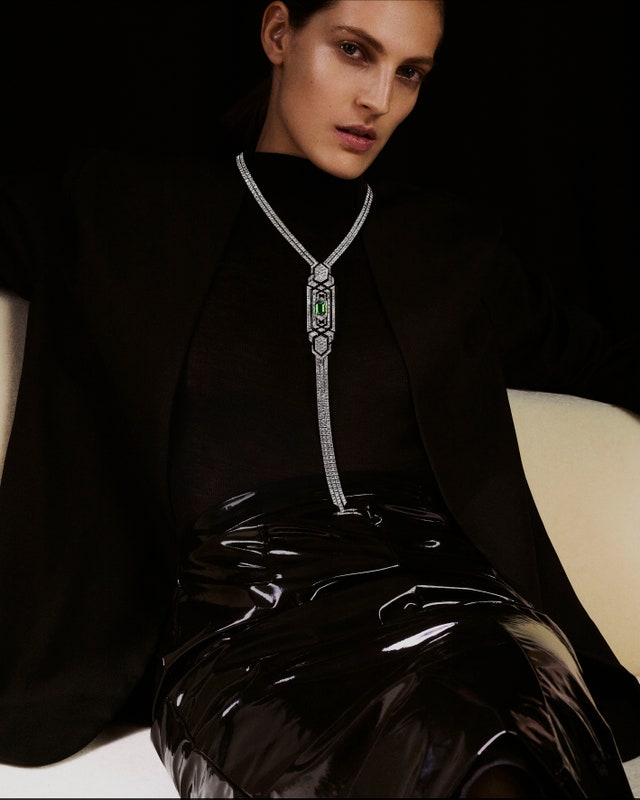Claire Choisne of Boucheron can always be relied on to breathe fresh air and fresh creativity into high jewellery, that grandest but perhaps most conservative of art forms. Now she takes one of jewellery’s most recognisable motifs of the past 100 years—Art Deco—and gives it the contemporary touch. Not, she says, that it needs much transformation to bring it into the 21st century. “It’s my favourite period ever for jewellery and all design actually—partly, I think, because it’s the style that lives beyond its time better than any other,” she explains.
The term ‘Art Deco’ originates in 1925’s landmark exhibition in Paris, the Exposition Internationale des Arts Décoratifs et Industriels Modernes, where the new style was celebrated and presented to a public hungry for modernism and lavish opulence after the strictures and suffering of World War I. Women, in particular, were enjoying more liberated lives than ever before, a freedom reflected in their daring flapper dresses, adoption of trousers and short hairstyles.

For Choisne, there are three codes essential to Art Deco in which opposing forces are in tension with one another. In the first, clean lines and simplicity pull one way and opulence in the other. “The mix of purity and opulence is why it remains so timeless,” she says. The lavish detail of gradated diamonds in one of Choisne’s favourite pieces in the collection, the Lavallière Diamants necklace, is kept in check with pure lines and a strict monochrome scheme of white diamonds and gold and black onyx and lacquer. It also embodies the second of Choisne’s Art Deco codes, in which a new femininity was expressed in the masculine. Just as the flapper would adopt men’s dress codes, this piece can be worn by a man or a woman, as a necklace, choker or collar pin.

Boucheron’s extensive archive of Art Deco designs inspired many of the pieces in the collection, some more directly than others. One elegant bow-tie design in diamonds and black lacquer was originally a simple brooch created in 1925. Reflecting the need for today’s jewellery to perform from day to night, Choisne made it convertible for this collection. It can be worn as a hair clip, as a brooch, as a solitaire ring—and, when wrapped round the solitaire diamond, as a dramatic and devastatingly chic couture bow-tie ring. Another archive design, a 1928 bracelet with a deceptively simple chevron motif of baguette and rose-cut diamonds, is reimagined as a precious ribbon that can be worn as a belt, choker, headband or pair of matching bracelets.

The third and final Art Deco code is colour, an essential counterpoint to the monochrome. Choisne chose to keep things simple by contrasting white and black lines with the vivid, life-affirming green of emeralds. The Col Émeraudes takes a typical Art Deco motif of linear emerald-cut stones in a precise frame of rock crystal, diamonds and onyx and turns them on their side to create an entirely contemporary, V-shaped necklace.

This is the second time that Boucheron has used January’s Haute Couture Week to showcase its heritage in a high jewellery collection. While its July collections focus on the pure experimentation that Choisne is best known for, whether it be with materials or jewellery techniques (think NASA-approved materials and real flowers mixed with diamonds), January’s collections are her opportunity to pay homage to the house’s illustrious history.

Last year it was the iconic question mark necklace, this year Art Deco, a period in which, Choisne says, Boucheron was prolific but is less known for today. She believes it is high time, especially given the current climate, to bring Art Deco back to the fore. “After World War I came a period of decadence and fun. Hopefully soon we will get to enjoy those same freedoms and celebrations,” she laughs. We couldn’t agree more.
This article was originally published on British Vogue





